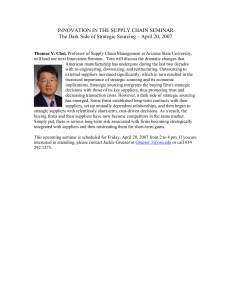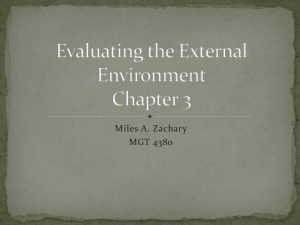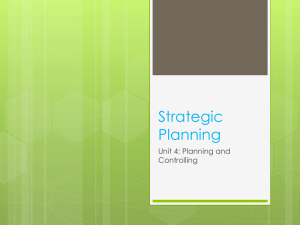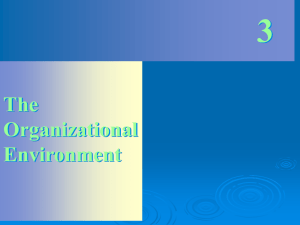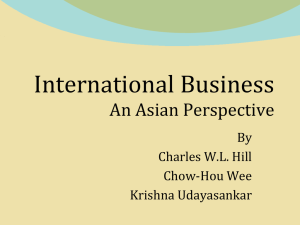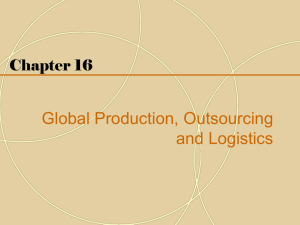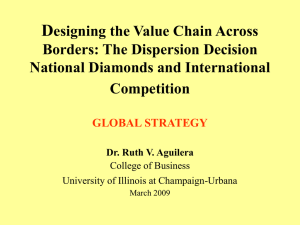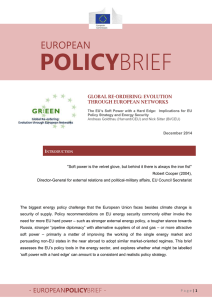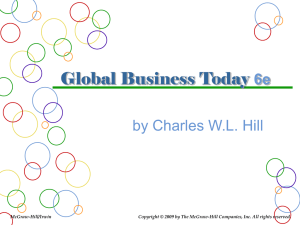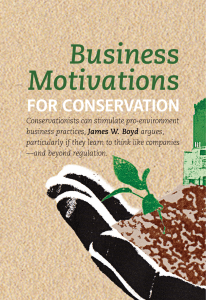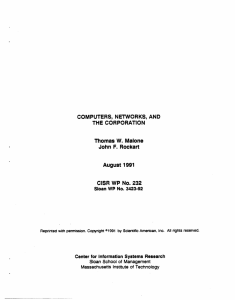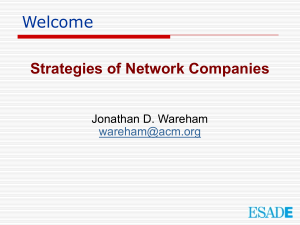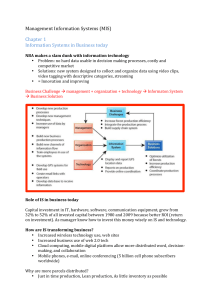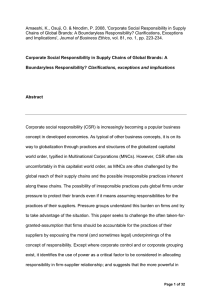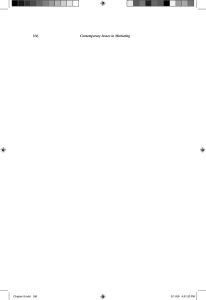File
advertisement
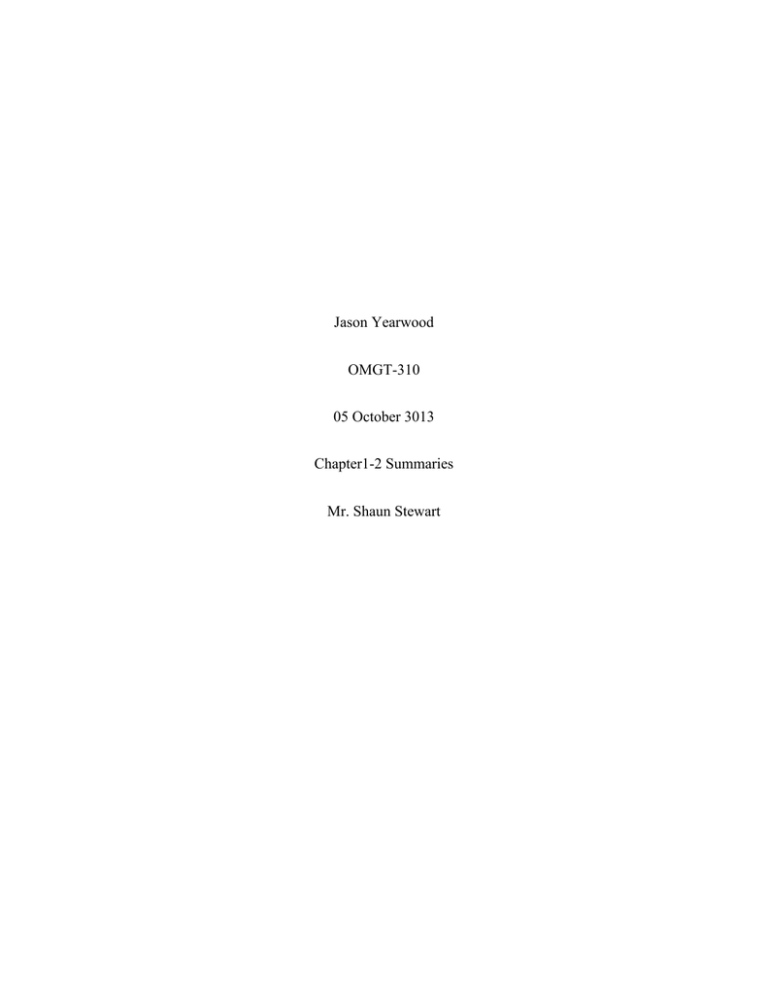
Jason Yearwood OMGT-310 05 October 3013 Chapter1-2 Summaries Mr. Shaun Stewart Chapter-1 Summary Chapter 1 opens with the definition of Operations Management (OM). It talks about operations management affecting work that is done in an office, hospital, restaurant, department store, or even a factory, basically the production of goods and services requires operations management. To create goods and services, all organizations require three functions which are marketing, productions/operations and financial/accounting. Every business needs these three functions to be successful. Through these functions value for the customer is created. However, firms seldom create this value by themselves. Instead, they rely on a variety of suppliers who provide everything from raw materials to accounting services and help develop a supply chain. Competition in the 21st century is no longer between companies; it is between supply chains. We study OM for four reasons starting with learning how people organize themselves for productive enterprise, learn how goods are produced, understand what operations managers do, and because it is a costly and vital part of an organization. All good operations managers perform the basic functions of the management process. The management process consists of planning, organizing, staffing, leading, and controlling. Operations managers apply this management process to the decisions they make in the OM function. There are ten strategic operations management decisions. There were several important figures in the establishment and enhancement of OM. Manufacturers produce a tangible product, while service products are often intangible. The operation activities for both goods and services are often very similar. They have quality standards, are designed and produced on a schedule that meets customer demand, and are made in a facility where people are employed. Similarly, the sale of most goods includes a service. Service constitutes the largest economic sector in postindustrial societies. The operations manager’s job is to enhance the ratio of outputs to inputs. Improving productivity means improving efficiency. Management creates the production system, which provides the conversion of inputs to outputs. Production is the making of goods and services. Measurement of productivity is an excellent way to evaluate a country’s ability to provide an improving standard of living for its people. There is single-factor and multifactor productivity that is used to measure productivity. Productivity increases depend on three productivity variables, labor, capital, and management. Identifying ethical and socially responsible responses while developing sustainable process that are effective and efficient productive system is not easy. Managers are also challenged to develop and produce safe, highquality green products, train, retain, and motivate employees in a safe workplace, honor stakeholder commitments while meeting the demands of a very dynamic world marketplace. Chapter-1 Questions 1. Who are considered stakeholders? (pg. 19) Those with vested in an organization, including customers, distributors, suppliers, owners, lenders, employees, and community members. 2. Historically, about ______ of the annual improvement in productivity is attributed to improvement in the quality of labor. (pg. 16) a. 21% b. 18% c. 10% d. 12% 3. T or F the three productivity variables are labor, customers, and management? (pg. 15) (F) 4. What is the difference between effective and efficiency? (pg 13) Efficiency means doing the job well and effective means doing the right thing. 5. Services constitute the ________________ economic sector in postindustrial societies. Largest (pg.11) Chapter-2 Summary Chapter 2 starts with the impact of having a global view and supply chains. Operations managers must have a global view of operations strategy. Firms find that their customers and suppliers are located around the world. The unsurprising result is the growth of world trade, global markets and the international movement of people. The supply chain can be improved by locating facilities in countries where unique resources are available. Many international operations seek to take advantage of the tangible opportunities to reduce their costs. Operations learn from better understanding of differences in the way business is handled in different countries. Because international operations require interaction with foreign customers, suppliers, and other competitive businesses, international firms inevitably learn opportunities for new products and services. Learning does not take place in isolation. Firms serve themselves and their customers well when they remain open to the free flow of ideas. Global organizations can attract and retain better employees by offering more employment opportunities. In spite of cultural and ethical differences, we live in a period of extraordinary mobility of capital, information, goods, and even people. An effective operations management effort must have a mission so it knows where it is going and a strategy so it knows how to get there. Firms achieve missions in three conceptual ways, differentiation, cost leadership, and response. This means operations managers are called on to deliver goods and services that are better, or at least different, cheaper, and more responsive. The idea is to create customer value in an efficient and sustainable way. Pure forms of these strategies may exist, but operations managers will more likely be called on to implement some combination of them. In the competitive environment, operations managers need to understand that the firm is operating in a system with many other external factors. The more thorough the analysis and understanding of both the external and internal factors, the more likely that a firm can find the optimum use of its resources. The five forces models are immediate rivals, potential entrants, customers, suppliers, and substitute products. Firms need to conduct a SWOT analysis which analyzes the strengths, weaknesses, external opportunities and threats. The idea is to maximize opportunities and minimize threats in the environment while maximizing the advantages of the organization’s strengths and minimizing the weaknesses. The idea is to build Key Success Factors (KSF) and core competencies that provide a competitive advantage and support a successful strategy and mission. KSF supports operations and in turn are supported by other activities. The activities fit together and reinforce each other. In this way, all supported activities support the company’s objectives. Non-core activities, which can be a sizeable portion of an organization’s total business, are good candidates for outsourcing. Outsourcing is not a new concept, but it does add complexity and risk to the supply chain. Chapter2 Questions 1. Transnational describes a condition in which material, people, and ideas cross _________________. National boundaries (pg. 48) 2. The __________________________ provides an objective way to evaluate outsource providers. Factor-rating method (pg. 45) 3. T or F Companies only outsource the core activities to external suppliers. (pg. 42) (F) 4. What is the purpose of an activity map? (pg. 41) It is a graphical link of competitive advantage, KSFs, and supporting activities. 5. The acronym SWOT means that a company must analyze the _________ (pg. 39) a. Strengths b. Weaknesses c. External Opportunities d. Threats e. All the Above
